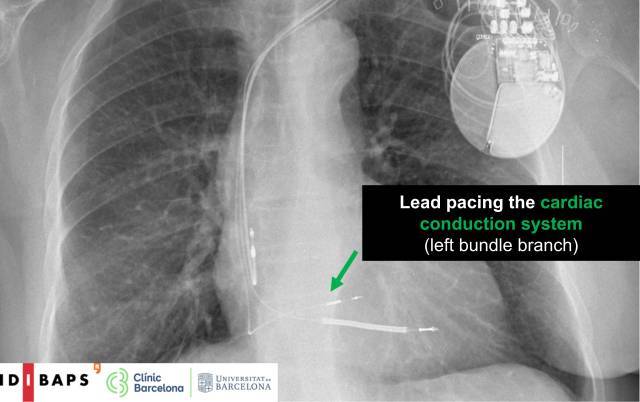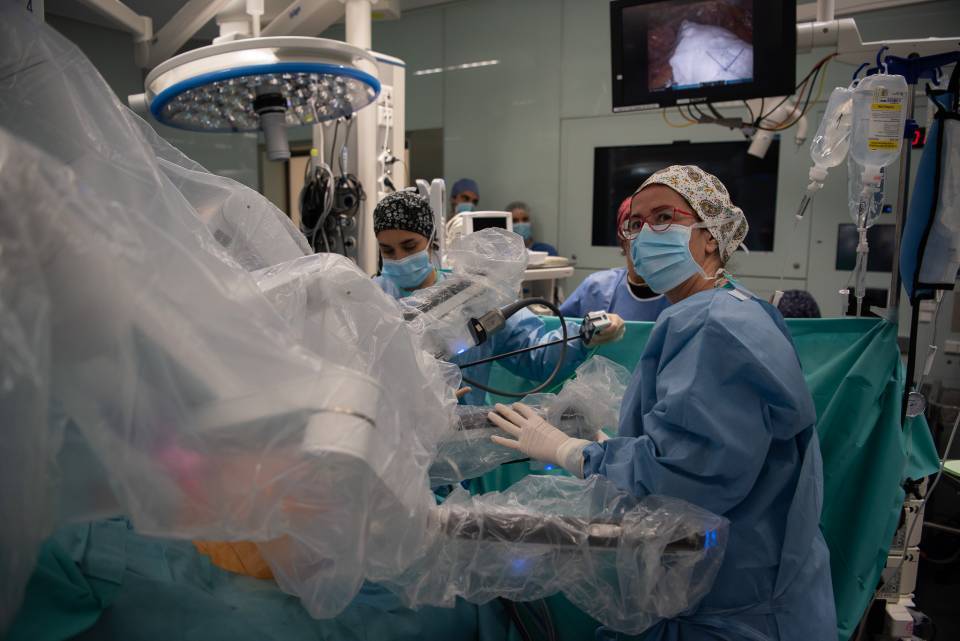Cardiac resynchronization therapy aims to coordinate the contraction of the ventricles to improve heart performance. Until now, the most widely used technique was biventricular pacing, which involves placing two pacing electrodes, one in the right ventricle and another in the left ventricle, to activate the heart muscle. In contrast, left bundle branch pacing involves implanting a pacing lead directly in the heart’s natural conduction system, to achieve more physiological and coordinated electrical stimulation. Despite its growing use in clinical practice, until now there have been few randomized studies published comparing this technique with biventricular pacing, and none of them had the clinical response as their main objective.
“The main contribution of the CONSYST-CRT study is that, for the first time, we rigorously and randomly compare two cardiac resynchronization therapy techniques in patients with heart failure, taking echocardiographic criteria and the clinical response into account,” explains Margarida Pujol-López, cardiologist and researcher at the Clínic-IDIBAPS and first author of the study.
The study analysed the efficacy and safety of both techniques in patients with advanced heart failure. The results show that left bundle branch stimulation is equivalent to biventricular pacing in terms of mortality, need for heart transplant, hospitalizations for heart failure, echocardiographic response, and postoperative complications.

“We have not observed any significant differences between the two techniques in any of the parameters analysed, including the total procedure time and the lead implantation time,” explains Lluís Mont, head of the Atrial Fibrillation Unit at the Hospital Clínic, head of the IDIBAPS Biopathology and Treatment of Cardiac Arrhythmias research group, member of CIBERCV, and leader of the project together with José M. Tolosana from the same research group. “This allows us to consider the left bundle branch pacing device as a solid alternative, especially in cases where biventricular pacing is not viable for anatomical reasons; until now, the only alternative was more invasive, requiring cardiac surgery to implant the lead,” he adds.
Another noteworthy aspect is that the incidence of adverse events, both immediate, in the first 24 hours, and long-term, requiring reintervention, was similar in both groups of patients.
Mihail G. Chelu and Kenneth A. Ellenbogen have dedicated an editorial to the article.
Study reference
Pujol-López M, Graterol FR, Borràs R, Garcia-Ribas C, Guichard JB, Regany-Closa M, Jiménez-Arjona R, Niebla M, Poza M, Carro E, Castel MÁ, Arbelo E, Porta-Sánchez A, Sitges M, Roca-Luque I, Doltra A, Guasch E, Tolosana JM, Mont L. Clinical Response to Resynchronization Therapy: Conduction System Pacing vs Biventricular Pacing. CONSYST-CRT trial. JACC Clin Electrophysiol. 2025. doi: 10.1016/j.jacep.2025.03.024. https://www.jacc.org/doi/10.1016/j.jacep.2025.03.024




